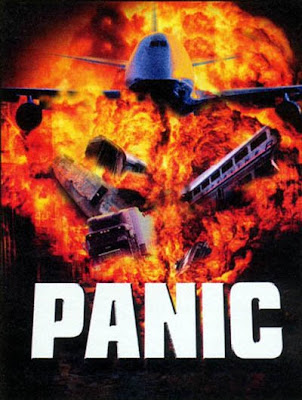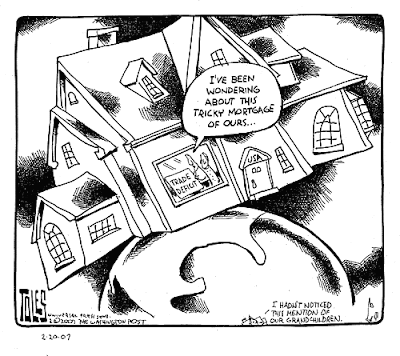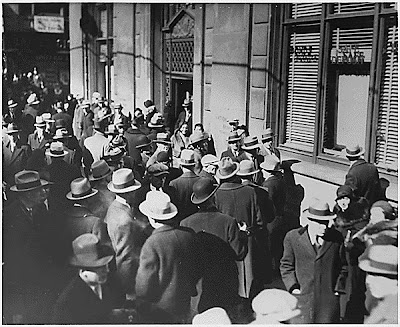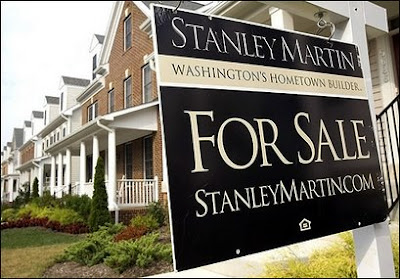 More market-destabilising news from a subprime lender. Fremont General Corp, one of the largest U.S. mortgage lenders for people with poor credit histories, said on Tuesday it will delay releasing fourth-quarter results. Furthermore, the company will not file its 2006 annual report by the March 1 deadline.
More market-destabilising news from a subprime lender. Fremont General Corp, one of the largest U.S. mortgage lenders for people with poor credit histories, said on Tuesday it will delay releasing fourth-quarter results. Furthermore, the company will not file its 2006 annual report by the March 1 deadline.
 The subprime market is rapidly moving into meltdown. Since December 2006, at least 24 mortgage lenders have hit the wall. Nowhere is the sense of panic more evident than in the cost of default insurance on subprime loans. In just a few short weeks, it has as gone from 0.5 percent over LIBOR to 12 percent.
The subprime market is rapidly moving into meltdown. Since December 2006, at least 24 mortgage lenders have hit the wall. Nowhere is the sense of panic more evident than in the cost of default insurance on subprime loans. In just a few short weeks, it has as gone from 0.5 percent over LIBOR to 12 percent.
Like in all financial panics, institutions are slow to react, and then move with lightening speed. As always, the credit rating agencies are behind the curve. However, once financial distress becomes obvious, they start downgrading. Standard and Poors has just placed 11 loan packages worth $146m on watch for a possible downgrade.The larger subprime lenders are desperately over-provisioning for bad loans. The British bank HSBC has set aside $10.5bn (£5.4bn) to cover bad loans in the US.
 Another subprime mortgage company has gone bankrupt. ResMae Mortgage Corporation is about to be auctioned and it is going for pennies on the dollar. The opening bid, by Credit Suisse Group, is $19.1 million, less than half the size of an offer received by ResMae when it filed for bankruptcy protection on Feb. 13. Since December last year, over 24 subprime mortgage companies have closed. More are likely to follow as the people shoehorned into inappropriate housing loans start to run into payment difficulties.
Another subprime mortgage company has gone bankrupt. ResMae Mortgage Corporation is about to be auctioned and it is going for pennies on the dollar. The opening bid, by Credit Suisse Group, is $19.1 million, less than half the size of an offer received by ResMae when it filed for bankruptcy protection on Feb. 13. Since December last year, over 24 subprime mortgage companies have closed. More are likely to follow as the people shoehorned into inappropriate housing loans start to run into payment difficulties.
ResMae’s problems follows hard on the liquidity problems suffered by Mortgage Lenders Network USA Inc. This subprime lender shut down most of its operations in December. It had been offering cheap loans to poor credit borrowers. However, it ran out of cash and was forced to meet collateral calls by its banks. The company has just filed for bankruptcy..
On Wednesday, shares of Kansas City based Novastar Financial Inc. tanked more than 42 percent to $10.10 per share. The subprime lender announced fourth quarter losses of $14.4 million. Company officials set aside $45 million in anticipation of defaulting mortgages and said they were "unsure Novastar would turn a profit in the next five years".
The growing problems of subprime lenders is hardly surprising. According to New York-based Bear Stearns, the level of delinquencies is rising fast, and has reached an all time high for loans contracted within the last 12 months. Bad lending practices helped fuel the housing bubble and now the party is over.
So what are we going to call this growing financial catastrophe? Better call it something sweet, so that we don’t spook investors. Why not call it an “industry consolidation”. There were too many subprime lenders anyway. Yes, that’s right, isn’t it. These recent closures and bankruptcies are bringing us to a better place. Soon we will be left with bigger, healthier subprime lenders who will know better than to issue toxic mortgages to people who can not afford them.
Nah, let’s forget “industry consolidation”, financial catastrophe sounds a lot more accurate.
 This cartoon more or less says it all. I nabbed it from the DC bubble blues blog, who appear to have taken it from the Washington Post.
This cartoon more or less says it all. I nabbed it from the DC bubble blues blog, who appear to have taken it from the Washington Post.
Let's keep this simple, no hype, no sham and no talking things up. This is what happened to the US housing market last year:
More than half the national metro areas it surveys reported deflating home prices on a year-over-year basis.
The fourth-quarter report from National Association of Realtors showed largest price decline on record as markets with price declines now outpace those with gains.
As David Lereah said "2006 was a year of contraction".
 According to local realtors, the Las Vegas housing crash seems to be accelerating. In January, the median price of homes sold on the Multiple Listing Service dropped 1.3 percent. That is quite a reduction for just one month. It brings the total decline to 4.4 percent since June, when the sales price was an all-time high of $315,000.
According to local realtors, the Las Vegas housing crash seems to be accelerating. In January, the median price of homes sold on the Multiple Listing Service dropped 1.3 percent. That is quite a reduction for just one month. It brings the total decline to 4.4 percent since June, when the sales price was an all-time high of $315,000.
Las Vegas has always been most commentor's pick for America's most overvalued housing market. Recently, BusinessWeek analysts said Las Vegas will lose the most of any major city in 2007 with 9.9 percent of its value disappearing. Fortune was a more less gloomy; it predicted prices will drop 6.6 percent in 2007 and 8.1 percent in 2008.
Keep away from those Las Vegas condos, folks. It is the fast track to foreclosure, bankruptcy and financial ruin.
Here is a cute little video offering a french perspective on the world wide housing bubble. The video animation makes the point clearly enough.
 President Hugo Chávez is a little concerned that Londoners might have difficulty paying for public transport. This week his government signed an agreement to subsidise the fuel bill for London’s buses. Venezuela will transfer up to $32m a year to fund bus journeys for the cities' poor.
President Hugo Chávez is a little concerned that Londoners might have difficulty paying for public transport. This week his government signed an agreement to subsidise the fuel bill for London’s buses. Venezuela will transfer up to $32m a year to fund bus journeys for the cities' poor.
Ken Livingstone, London's mayor and well known looney left wing socialist, said the 20 per cent discount would fund half-price rates on buses or trams for 250,000 Londoners who receive welfare payments.
In return, London will send over its transport chief, Peter Hendy, to set up an office in Caracas, where British officials will impart to the Venezuelan capital London’s expertise in traffic management and urban planning. It is not clear exactly what Caracus can learn from London when it comes to transport. London has one of the most expensive and congested transportation systems in the world.
This deal was never about serving the interests of the citizens of these two cities. Rather, it is about promoting the the public relations interests of Chavez. The London mayor also agreed to act as the UK mouthpiece for the Venezuelan dictator. The mayor of London’s office had pledged to “actively and efficiently promote Venezuela’s image in the UK”.
In effect, London, which is the wealthiest region in Europe, is now receiving foreign assistance from a developing nation.
"Say the words "yen carry-trade" to someone at random and they will probably ask you to repeat yourself, before admitting they don't know what you're talking about.
Utter the same phrase to a central banker or a currency dealer, though, and you could unleash a torrent of opinion, soul-searching or even anguish.
The yen carry-trade is one of the hottest topics in global finance. The implications of it could be disastrous. Or they could be benign. But whoever you are and whatever you are invested in, you should be closely tracking the yen carry-trade.
The story starts in Japan, where interest rates are incredibly low. For the past six months, Japanese borrowing costs have been at 0.25 per cent. Sophisticated global traders exploit this by taking out cheap loans in yen, then converting that money into, say, dollars and investing it in American assets.
With US interest rates at 5.25 per cent, a full 5 percentage points higher than in Japan, the profit-making potential of "carrying" credit between the yen and the dollar in this way is enormous. Likewise, there are huge gains to be made by switching borrowed yen into sterling, euro and a host of other relatively high-yielding currencies.
Recent months have seen a frenzy of such carry-trading. No one knows the true scale of the flows - most of the deals are done by private hedge funds on unregulated markets - but the world has been flooded with cheap yen.
With its ultra-low interest rates, Japan has become a massive "easy-money" machine for the rest of the planet. The resulting liquidity boost has flattered asset prices everywhere, pushing major stock markets to multi-year highs while fuelling booms in housing and commodities too.
So what's the problem? Well, the scale of the carry-trade is now so big, and there are so many borrowed yen around, that Japan's currency last week plunged to a 21-year low on a trade-weighted basis.
That matters. Japan is a major global exporter. The rock-bottom yen is now causing headaches elsewhere, with Western manufacturers furious that it gives their Japanese competitors an unfair advantage.
But that's just the start of it. The real, systemic danger is that if - when - the yen starts rising, the carry-trades could suddenly "unwind", triggering financial shockwaves across the globe.
That's because many people agree with Western manufacturers that the yen is too low. Japan is, after all, in the midst of a prolonged recovery - figures out last week put annual growth at a chunky 4.8 per cent.
So, given that the yen is being artificially suppressed by all this carry-trading, the currency could well spring back. If that happened, all those investors holding yen-denominated debt would instantly owe more. At the same time, the investments they have made, having borrowed those yen, would be worth less.
In other words, if there is any sense the yen is about to rise quite sharply, for whatever reason, the carry-trades could be dumped - making that appreciation not only a self-fulfilling prophecy but also far bigger than it should be.
The tens of billions of pounds of global investments made off the back of carry-trading - investments that are supporting asset prices in every-thing from the FTSE100 to antiques and fine wine - would then suddenly look very grim.
If that sounds far-fetched, the last time yen carry-trades built up was in 1997 and 1998. Back then, a seemingly innocuous event - a minor Russian debt default - caused global investors suddenly to re--examine their appetite for risk.
As a result, the yen rallied by almost 30 per cent in just a few weeks as the carry-trades unwound. That caused the collapse of Long-Term Capital Management, a US hedge fund, ultimately leading to a rather serious global slowdown.
The parallels with today are ominous - except this time the hedge funds are more numerous, the carry-trades are worth more, the global liquidity bubble is bigger and investors are now leveraged on a much, much scarier scale.
And when you think about the extent to which even mainstream investors - not to mention pension schemes - have bought into hedge funds, it becomes clear why the yen carry-trade needs to be defused in an orderly fashion.
All this puts policymakers between a rock and a hard place - as shown by last weekend's meeting of the G7 finance ministers. The world wants a stronger yen, to reduce Japan's advantage. That led to calls for direct G7 intervention - the buying-up of yen to support the currency artificially - and/or for the Bank of Japan to increase interest rates when it meets on Wednesday.
But if either move causes the yen to rise sharply, that could, given the extent of the carry-trades outstanding, spark a wave of global risk aversion and a major financial shock.
Little wonder, then, that the G7 fudged. Finance ministers merely hinted the yen was not a "one-way bet" - amounting to a veiled threat to intervene.
The markets reacted defiantly, driving the yen lower still. Traders were convinced, probably rightly, that the G7 hadn't got the guts to bolster the yen. The carry-trades mean Western leaders are petrified of lighting a fuse that causes a financial explosion.
And yet, the lower the yen goes, the greater the potential of "financial whiplash" when the currency eventually changes course.
If the Bank of Japan does raise rates on Wednesday, it could cause the carry-traders to trim their sails and slow down gradually. Or it could cause them to panic. No one knows.
And that's why yen carry-trade" is so much more than a piece of inane financial jargon. It is a reminder of the often-forgotten lessons of recent financial history."
 Sit back, relax and think about where you would like to be when you are sixty five. Spend five long minutes pondering the joy of retirement. Joy? Wake up. There is nothing joyful about growing old. It is hard, often lonely and painful.
Sit back, relax and think about where you would like to be when you are sixty five. Spend five long minutes pondering the joy of retirement. Joy? Wake up. There is nothing joyful about growing old. It is hard, often lonely and painful.
Old people have only one reliable friend - money. The more you have, the easier life will be. So, now ask yourself this much more important question - how much wealth will you have accumulated for retirement?
Oh, so you are depending on the capital gains from your house. Think that one through for a moment. Lots of other people are doing the same thing. So when you are trying to cash in those sweet capital gains, many people will be dumping their house onto the market. Housing is a very unlikely retirement fund. Besides, you will have to live somewhere. Moreover, moving house as an elderly person sounds way too stressful.
Are you saving? No? So how are you going to live once you stop working? Social security, you say. Again, far too many people are depending on that clapped out retirement plan. Social security is going broke; everyone knows this and so do you. In ten years time, it will be gone.
So what is the answer? The 20-60-20 rule. It is very simple; you should be spending no more than 20 percent of your income on housing costs, 60 percent should be used for current non-housing expenditure, and 20 percent should be saved. And no, that 20 percent is not your estimate of the capital gain on your house. It is net income, put aside every month and placed into a savings account.
If you save for long enough, you might, just might have enough put away to make the grim reality of old age a litte more palatable.
Remember - 20-60-20.
Mortgage lenders dropped 6,500 full-time employees from their payrolls in December. The U.S. Bureau of Labor Statistics reported that employment in the mortgage banking and broker sector declined from 501,200 in November to 494,700 in December. The sharp decline in employment was due to a the slowing real estate market. Home sales were down 10 percent last year.
The Bureau of Labor Statistics can be found online at http://stats.bls.gov
 It has been a while since a bank failed in the US. However, the first one in three years went under last week. The FDIC came in and organised the take-over of Metropolitan Savings Bank, Pittsburgh, Pennsylvania, by Allegheny Valley Bank of Pittsburgh, Pittsburgh, Pennsylvania. The grim details can be found on the FDIC website.
It has been a while since a bank failed in the US. However, the first one in three years went under last week. The FDIC came in and organised the take-over of Metropolitan Savings Bank, Pittsburgh, Pennsylvania, by Allegheny Valley Bank of Pittsburgh, Pittsburgh, Pennsylvania. The grim details can be found on the FDIC website.
Personally, I always liked the Grinch.
 On Thursday, the Commerce Department published the grim reality. People are sustaining their unwarranted lifestyles by eating into their wealth. In 2006, the savings rate was minus 1 percent. Moreover, the dismal 2006 savings rate exceeded the negative savings rate recorded in 2005, when people spent 0.4 percent more than they earned. Statisticians have to go back to 1933 to find a lower savings rate. The savings rate has been negative for an entire year only four times in history -- in 2005 and 2006 and in 1933 and 1932. Now, does that sound like something that can continue indefinitely?
On Thursday, the Commerce Department published the grim reality. People are sustaining their unwarranted lifestyles by eating into their wealth. In 2006, the savings rate was minus 1 percent. Moreover, the dismal 2006 savings rate exceeded the negative savings rate recorded in 2005, when people spent 0.4 percent more than they earned. Statisticians have to go back to 1933 to find a lower savings rate. The savings rate has been negative for an entire year only four times in history -- in 2005 and 2006 and in 1933 and 1932. Now, does that sound like something that can continue indefinitely?







22